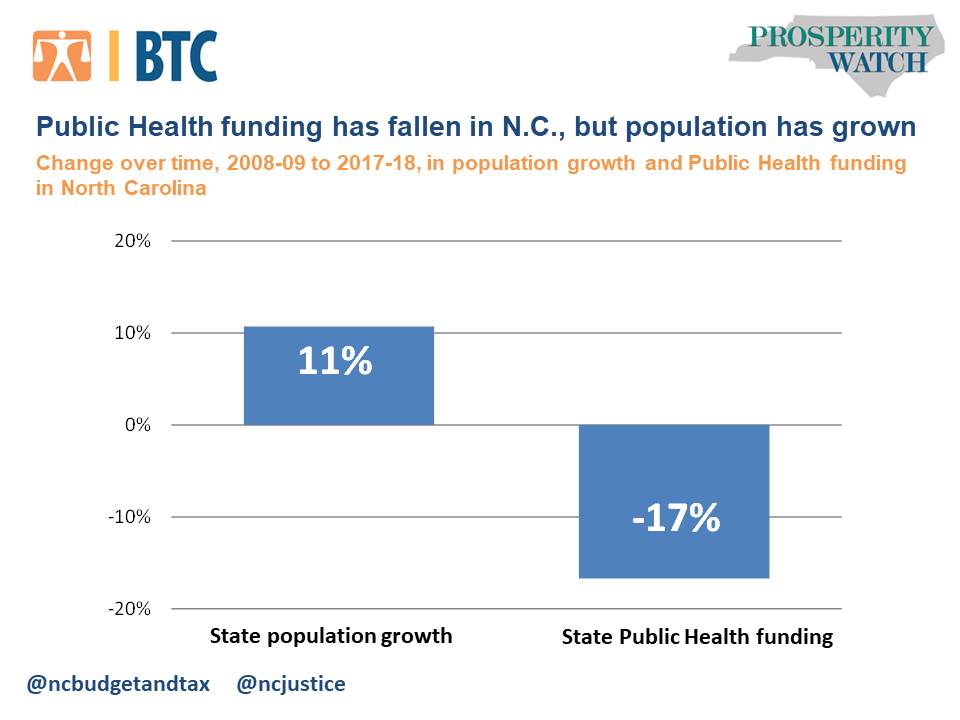State funding to public health has been outpaced by the growth of North Carolina’s population. Over the past ten years, the state population has grown by 11 percent, or almost 1 million people, while at the same time investments to promote the highest possible level of health have decreased by 17 percent. The state investment in public health was $188 million in the 2008 fiscal year; today, that would be equivalent to $210 million – yet our state invested only $157 million in public health in the 2017 fiscal year.
Falling behind on public health investments has not helped North Carolina’s goal “to be one of the healthiest states in the nation.” As a result, our state is not on track to achieve major health objectives by 2020. North Carolina has consistently trailed other states in overall health rankings for almost two decades, and currently ranks 33rd in the country.
Analysis shows that various major health objectives in our state are worse off today compared to ten years ago. These include the unintentional poisoning mortality rate; the percentage of individuals aged 12 years and older reporting illicit drug use; the suicide rate; the rate of mental health-related visits to emergency rooms; the percentage of adults who have had permanent teeth removed due to tooth decay or gum disease; the number of critical violations per restaurant/food stand; and the percentage of adults with diabetes.
Public health investments include the funding of early child intervention, vital records, HIV/STD prevention, waste treatment and sanitation, infectious disease control, hazard management, environmental health regulation, and public health preparedness and response, all of which help protect entire communities.
Public health investments that keep up with the needs of our growing population and changing demographics are needed in order for our state to effectively address communicable diseases, epidemics, contaminated food and water, and other emerging health issues, in order to be a healthy state.
 Justice Circle
Justice Circle 
